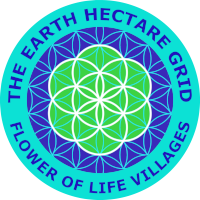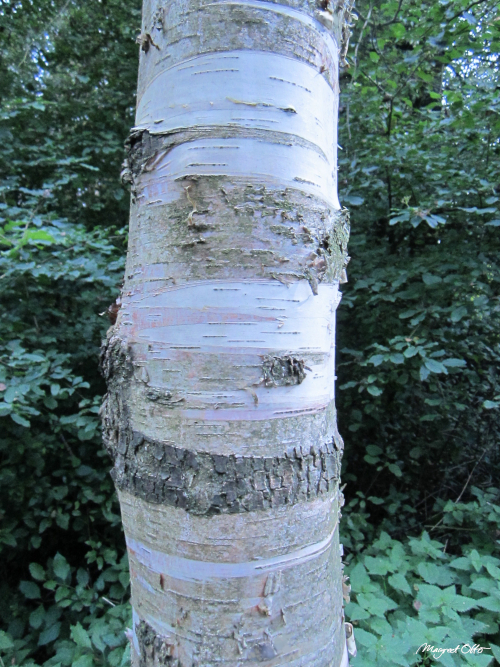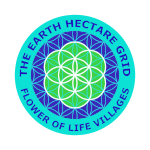
DECIDUOUS TREES
Temperate Climate ZoneOn this page are some examples of trees in the northern temperate climate zone that are deciduous in fall and winter.
DECIDUOUS TREES
Deciduous trees -and shrubs and bushes- in temperate climate zones bear green foliage in spring and summer, and lose their leaves in autumn and winter. They are seen in public green spaces, where they are maintained when necessary and usually by the local or provincial counsils.
Naturally, the trees also occur in forests and woods, where nature takes care of itself. There is a lot of biodiversity among those trees, shrubs and bushes.
‘FOOD TREES’
Fruit- and nut trees and -shrubs or -bushes, are also deciduous in the temperate climate zones. For the Earth Hectare Grid, fruit- and nut trees that produce edible fruits and nuts for humans, are also called ‘food-trees’.
These food-trees differ from what we call ‘common’ deciduous trees, which do not produce edible fruit or nuts for humans.
Picture below: Several deciduous tree species in a park with striking autumn colors.

COMMON DECIDUOUS TREES
Now what are ‘common’ deciduous trees for the Earth Hectare Grid?
First, and as stated before, they distuingish themselves from the ‘food-trees’.
This is because common deciduous trees do not produce edible fruit, berries or nuts for humans, and neither for livestock or large wildlife.
OTHER PURPOSES
However, common deciduous trees do certainly have other purposes in our biotope. For example, they produce green foliage in spring and summer, and thus provide oxygen for 6 months of the year. And at the same time they are absorbing CO2 in their process of photosynthesis.
Picture below, deciduous Beech tree.

HABITAT BIRDS AND SMALL ANIMALS
The green canopies of common decidous trees provide nesting opportunities for birds in spring and summer.
They are also the main food source for what we call the ‘small ground-animals’. These are mice, moles, rabbits, rats, squirrels, hedgehogs, etcetera.
BIOTOPE FOR INSECTS
Different types of insects also find their home in the canopies and other parts of the trees. They make an import contribution to the flourishing of the entire biotope. These are insects such as caterpillars, butterflies, bees, beetles and all sorts of other insect species.
SHADE UNDER CANOPIES
The canopies of the trees also provide the needed shade on hot summer days. In autumn the leaves turn in various shades of red, ochre, yellow and brown, after which they fall to the ground. The decomposing leaves provide a humus-rich layer to the soil, and form a nutrient bed for the trees and bushes for the following spring.
COMMON DECIDUOUS TREES
Below follow some examples of common deciduous trees in the Northern temperate climate zone. Those lose their leaves in fall and winter, and do not produce food (fruit & nuts) in summer for humans and large wildlife, but only for birds and small ground-animals).
Picture below of stately tall poplars.

POPLAR
Think, for example, of trees such as the Poplar, genus Populus of the Willow family. There are around fourty species worldwide, These trees look great when they have grown large and give a stately impression, especially in summer with their beautiful rustling canopy in the wind, under which you can find cooling in summer heat.
PLATANUS (PLANES OR PLANE TREES)
Another example is the Platanus, which can be quickly recognized by the patterned bark in green and brown tones. Fully matured the tree can reach a height of 98 to 164 ft (30-50 m).
There are about 9 species worldwide, such as the Western-Plane tree (Platanus Occidentalis) from America, and the Oriental-Plane tree (Platanus Orientalis) from the Balkans and Asia Minor.
The plane tree with the characteristic bark. All Platan trees belong to the Platanaceae family.

PARK-, AVENUE-, AND STREET TREES
Plane trees, Poplars and other such trees, are often planted in the Netherlands as a park-, avenue- and street tree, because of the ornamental characteristics and also the shady canopy. For the Netherlands these are concidered exotic trees. Unforunately, some of those have been cultivated into hybrids as well.

Close-up of the nicely structured bark of the Plane tree, which flakes off and colors in various shades of green and brown.
EXOTIC TREES
The custom of planting exotic trees in the Netherlands, which are foreign for the country, thus nonindigenous or nonnative, probably dates from the period when wealthy nobles were able to travel the European continent by horse and carriage, and perhaps also sail the world’s seas, where they discovered these beautiful trees elsewhere and took seeds or saplings back with them. But nowadays with modern travelling, the import of foreign tree and plant species is tremendous.

GINKO BILOBA
Such an example of an exotic tree is the Ginko Biloba tree, originally from China and Central Asia. It has beautiful unique smooth edged fan shaped leaves, that are clustered on the branches. See picture above.
The Ginko Biloba is the only species belonging to the Ginkoaceae. It is estimated that the Ginko was already on the planet around a 100 million years ago, but is nowadays growing as a heritage in the wild around 4500-5000 years old, in small areas in eastern and southeastern China.
The tree nowadays also grows in other parts of the world such as Korea, America, Canada and Europe, also cultivated varieties.
OR JAPANESE NUT TREE
The name ‘Ginko’ etymologically is believed to be stemming from Japanese, and it means ‘silver-abricot’, resembling the color of the fruit. The Ginko-fruits however look more like large yellowish or light orange cherries, which only grow on the female trees. Once they ripen and fall of the trees they spread the smell of aging smelly cheese. In Chinese the name for the tree sounds like ‘Bakwa’.
The seeds of the Ginko grow inside the fruits and are edible. They have the size of a walnut and therefore, the Ginko tree is also called Japanese ‘Nut Tree’. Continue reading about the nuts below.
THE GINKO NUTS
The nuts are available on Asian markets and can be sprouted. Eaten in large amounts however, the Ginko nut can cause seasures. But a few of them, around a quantity of 10, roasted and sprinkled with some salt, turn in a translucent green, and are then considered a delicacy. The nuts can also be mixed in soups or are grinded to powder and mixed with flour as to reduce the costs of the flour.
Because the nuts can only be eaten in small quantities, it is not recommended to grow these on a large scale in Europe, also because the tree isn’t native. Therefore this tree has been classified as a decidious exotic tree.
The male trees by the way do not produce the smelly fruits (whih might also cause an allergic reaction when eaten), and are therefore planted closer to homes as decorative trees, because they don’t smell bad when the fruits are ripe and because of the nicely shaped leaves which also do have medicinal properties. But if one doesn’t mind the smell for a short period of the year, then the female trees produces a nut harvest as well!
But as a ‘food-tree’ in Europe, the Chestnut might be the better choice for a nut tree for mass production, as it is native and indigenous, and because one can eat as many chestnuts as one wants.
OXYGEN, CO2, NESTS.
And although exotic trees such as the Ginko Biloba, or the Plane trees and Poplars, are deciduous in autumn and winter, and also do not produce food for humans, the trees do provide oxygen in the summer and absorb CO2.
NATIVE TREE SPECIES
The above applies also to the many native trees in the northern temperate climate zone, such as for the Birch, recognizable by its beautiful white bark.
PAPER BIRCH
The Paper Birch (Betula Papyrifera), has light colored rings in the white bark that peels off curly in some places, which looks like curled paper.
Stem of the Paper Birch, Betula Papyrifera.

THE EUROPEAN BIRCH
The European White Birch (Betula Pendula), has a smooth white bark with almond-shaped oval spots which looks like eyes. This bark does not peel off.

These Birches below are planted at a mutual distance of 10 to 15 meters, or 32 -49 feet.

Birches have been native to the Netherlands since time immemorial. For example, there is also a place name ‘Berkhout’ in the province North Holland, which means ‘BirchWood’.

Leaf of the European Birch, both summer and autumn.

The European Birch, like the Paper Birch, has ribbed horizontal stripes across the bark. However, these do not peel off as with the Paper Birch.

MORE NATIVE TREE SPECIES
Another native species (besides the Birch), is the Maple tree, (genus Acer), of which are aroud 125 Acer species worldwide.
Some species of Maple trees are: Bigleaf Maple (Acer Macrophyllum- 40 meters tall-, Sugar Maple (Acer Sacharum) yes the tree that contains the sweetest sap, tapped from the trunk as maple sirop, and which maple-sugar is derived of, Common maple, Norway maple, Paper maple, Field maple, or Spanish barge).

These Maple seeds are almost ripe at the end of September. In Holland we call them also ‘helicopter seeds’ because they whirl downwards in pairs of two with a circulating movement of the wings, reminiscent of the rotating blades of a helicopter. Tiny ground-animals do eat the Maple-fruits and seeds, such as field mice, chipmunks and squirrels.

Maple leaves are large and have a beautiful shape. They are also symbol of the Canadian flag. In a way, the leaves function as solarpanels which can derive lots of sugar in the proces of photosynthesis for the nourishment of the tree, which is converted into the tree-sap! Deer and moose eat the young twigs and leaves of the trees.
Maple leaves color red in autumn, and are famous for their bright colors that time of the year.

MORE COMMON DECIDUOUS TREES
There are many more deciduous tree species that although they provide little food for humans or wildlife, create plenty for birds and small ground-animals (as well as oxygen). Some of these are:
The various Alder species
(White alder or Gray alder, Black alder, Green alder),
The various Linden species
(Dutch lime, Winter lime, Summer lime),
The ‘Ornamental’ Chestnut (being the wild chestnut or horse chestnut with white blossoms -and the hybrid pink blossoms),
The various Poplar species
(Balsam Poplar, Rattle Poplar, Black Poplar),
The various Willow species
(Gray willow, Water willow, Crack willow, White willow, ‘Ornamental’ willow (weeping willow), Toe or Cat willow, Laurel willow.

The Ornamental Willow (Salix Pendula, Genera: Salix, Salicaceae – Willow family) adorns many ponds with its descending branches. The ‘Pendula’ refers to the Latin word ‘pendulus’, meaning ‘hanging’ & ‘moving back and forth’, here these are the branches oftentimes quietly rustling and gracefully swaying in the wind.
Photo below: Picturesque pollard willows at a small forest fen.

TASTES DIFFER
There are many more tree species in the Netherlands that are both deciduous but non-food-bearing. Many of them are also placed as ornamental trees, because of their beautiful bloom (blossoms in the spring, or nicely colored -but non-edible berries in the autumn). Tastes differ -so to speak- when it comes to planting tree species. Many of the tree species mentioned will be preserved in the Netherlands.
ORNAMETAL CHESTNUT
What to think of the beautiful flowering exotic ‘Ornamental’ chestnut tree? This tree doesn’t naturally occur in the Netherlands, and it is traditionally named ‘Wild’-, or ‘Horse’-chestnut.

However, the chestnuts that this tree produces in the fall are not edible, not even for horses. The majectic blossoms in spring are visited by bees that produce honey from them. At the end of October this tree loses its large leaves. See the page NUT TREES for more info on Chestnut trees.
AND&OR
It could happen that residents of family domains more often choose food-bearing trees and&or evergreen trees for practical reasons.
The ‘and&or’ is a choice that can be made for one and&or the other. Common deciduous trees still have their righteous place on family domains though. Because a ‘food forest’ doesn’t necessarily consist of fruit- and nut trees only. There are also mushrooms, edible leaves, maple sirops and all of that. Fruit- and nut orchards sounds nice too. Just saying!
But Squirrels know how to collect and store their food!

SECOND SELECTION
So if, in addition to a food forest, one also wants evergreen trees on their estate, one can make a second selection. Suppose you want a fence that visually also provides a dense hedge in winter, and that also blocks the wind, then evergreen conifers are a solution.
The seeds of a number of conifers are also edible for humans, such as from the Pine tree. It would therefore be logical if habitants of hectares-villages opt for a conifer that remains green all year round, AND also produces edible seeds.
The beauty of the concept of the family-domains is that each family can make its own choice for the tree species to be planted. This applies to both the quarter hectare of forest on each hectare-plot, as well as the green fencing of the hectares. So a wide variety of tree species can be seen.
Next pages are on fruit-trees, nut-trees, conifers, shrubs and bushes.
